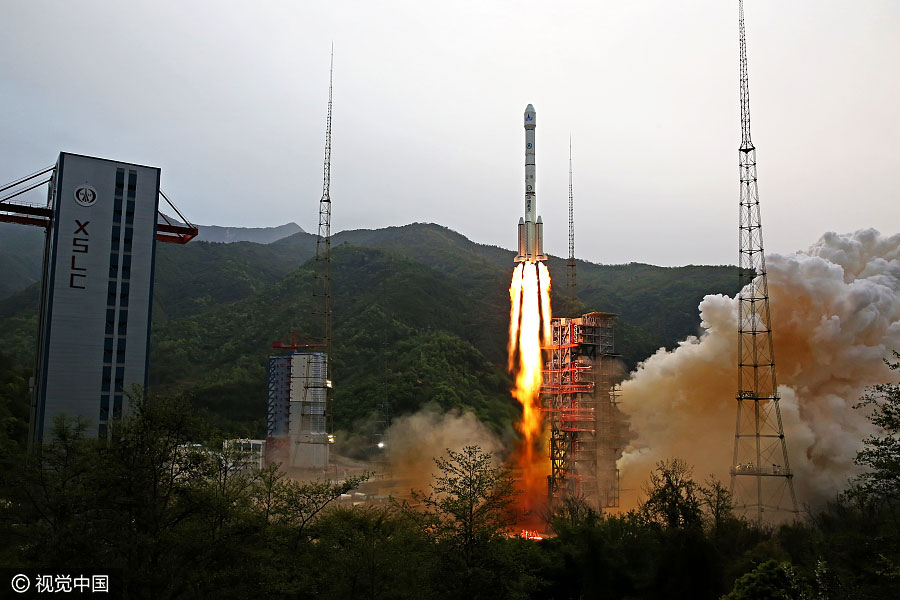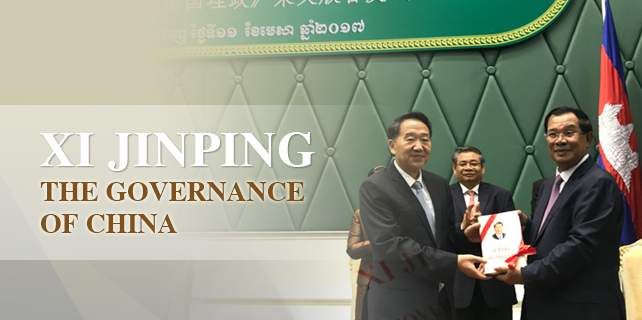Launch of satellite marks new communications era
 |
|
Shijian 13, China's most advanced communications satellite, is launched at the Xichang Satellite Launch Center in Sichuan province on Wednesday.[Photo/VCG] |
Currently, most satellites rely on chemical propulsion, which requires a lot of fuel that occupies a large proportion of carrying capacity, and restricts the number and weight of scientific instruments a satellite can carry.
Zhou said Shijian 13 is able to cover most parts of China's land territory and will help to enable passengers on jetliners and high-speed trains to use the internet.
The use of Ka-band broadband allows Shijian 13 to transmit high-resolution video, a feature that previous Chinese satellites do not have. In addition, the Ka-band handheld devices are smaller and more portable than those based on other frequencies, which means they are more convenient to carry and use, Zhou said.
He added that developing nations have huge demand for DFH-3B-based communications satellites such as Shijian 13, not only because of its capability, but also because it can accommodate various kinds of equipment in accordance with clients' requirements.
The academy has made seven communications satellites for overseas users, including Pakistan, Venezuela and Laos, and is finalizing export contracts for more than 10 such satellites, he said.
However, Zhou said China still needs to catch up with the top developers of communications satellites in the United States and Europe, such as Boeing and Thales Alenia Space, when it comes to satellite technology and capacity.
In response, the country will develop several new types of advanced communications satellites, including multimedia broadcasting satellites and ultra-large-capacity broadband satellites, he said.
In June, the Shijian 18 communications satellite, the first to be developed based on China's new-generation DFH-5 satellite platform, will be launched by a Long March 5 heavy-lift rocket at the Wenchang Space Launch Center in Hainan province, according to Zhao.
He said the overall capability of the Shijian 18 will be better than that of all communications satellites currently used by other nations, and its service will improve internet connectivity and accessibility for Chinese users as well as reduce users' costs.
China now operates 16 communications satellites, according to Zhou.













